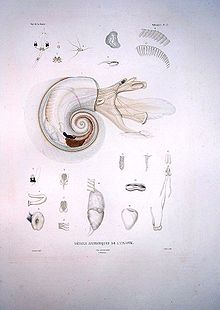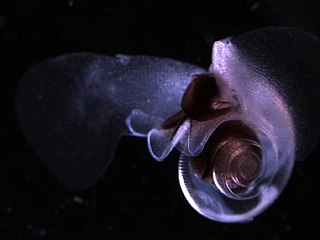
Sea butterflies, scientific name Thecosomata, are a taxonomic suborder of small pelagic swimming sea snails. They are holoplanktonic opisthobranch gastropod mollusks. Most Thecosomata have some form of calcified shell, although it is often very light and / or transparent.

The Limacinidae are a family of small sea snails, pteropods, pelagic marine gastropod mollusks in the clade Thecosomata.

Limacina is a genus of swimming predatory sea snails commonly known as sea butterflies in the family Limacinidae. This genus contains some of the world's most abundant gastropod species.

Cymbuliidae is a family of pelagic sea snails or "sea butterflies", marine gastropod mollusks in the superfamily Cymbulioidea.

Potamididae, common name potamidids are a family of small to large brackish water snails that live on mud flats, mangroves and similar habitats. They are amphibious gastropod molluscs in the superfamily Cerithioidea.

Atlanta is a genus of pelagic marine gastropod molluscs in the family Atlantidae. They are sometimes called heteropods.

Carinaria is a genus of medium-sized floating sea snails, pelagic gastropod molluscs in the family Carinariidae.

Pterotracheidae is a family of medium-sized to large floating sea snails, pelagic gastropod molluscs. They are in the superfamily Pterotracheoidea along with two other similar pelagic families, the Atlantidae and the Carinariidae.
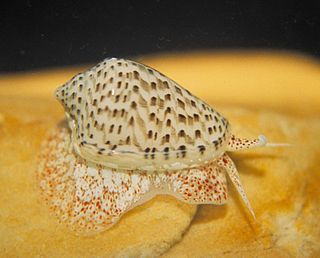
Marginellidae, or the margin shells, are a taxonomic family of small, often colorful, sea snails, marine gastropod molluscs in the clade Neogastropoda.

Crassispira is a genus of small predatory sea snails with narrow, high-spired shells, marine gastropod mollusks in the family Pseudomelatomidae. They first appeared in the fossil record approximately 48.6 million years ago during the Eocene epoch, and still exist in the present day.

The Pterotracheoidea is, according to the Taxonomy of the Gastropoda, a taxonomic superfamily of sea snails or sea slugs, marine gastropod molluscs in the clade Littorinimorpha. They are commonly called heteropods or sea elephants.

The family Cavoliniidae is a taxonomic group of small floating sea snails, pelagic marine opisthobranch gastropod mollusks.
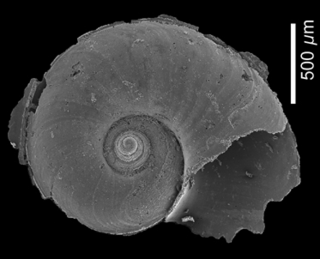
Atlanta brunnea is a species of sea snail, a holoplanktonic marine gastropod mollusk in the family Atlantidae.

Atlanta echinogyra is a species of sea snail, a holoplanktonic marine gastropod mollusk in the family Atlantidae.

Oxygyrus keraudrenii is a species of sea snail, a holoplanktonic marine gastropod mollusk in the family Atlantidae.

Protatlanta souleyeti is a species of sea snail, a holoplanktonic marine gastropod mollusk in the family Atlantidae.

Atlanta is a genus of pelagic marine gastropod molluscs in the family Atlantidae.

Turricula is a genus of sea snails, marine gastropod mollusks in the family Clavatulidae.
Carinaria galea, common name the helmeted carinaria, is a species of sea snail, a marine pelagic marine gastropod mollusc in the family Carinariidae. It was first described in 1835 by William Henry Benson, an amateur malacologist in the Bengal Civil Service.
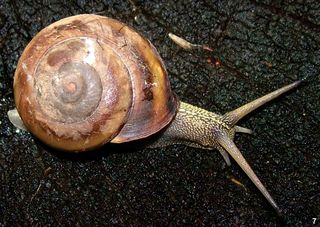
Minaselates paradoxa is a species of air-breathing land snail, a terrestrial pulmonate gastropod mollusc in the subfamily Epiphragmophorinae.
